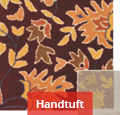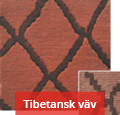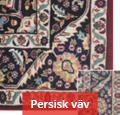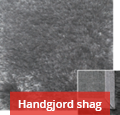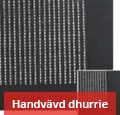There are many indications that rugs were manufactured thousands of years before the birth of Christ, and the oldest preserved rug is considered to originate from around 400 B.C. During the impressive number of years that mankind has made rugs, different techniques have also evolved, and continue to do so even today. Our manufacturer masters several of these techniques and has a long tradition of producing rugs within the family.
Hand-tufted rugs
The design is imprinted by hand using a stencil on a weave mounted on the tufting frame. The tufter manually fills each design section, following the color position as marked. After the rug is tufted, latex and backing is attached to it. It is then hand-sheared and carved as desired.
Hand-knotted rugs – Tibetan weave
The cotton warp is mounted on a handloom. The weaver inserts the yarn for making a pile, using a rod. The weaver uses a design map, following the color position of each knot. After the rug is taken off the loom, it is hand-washed and hand-sheared.
Hand-knotted rugs – Persian weave
The cotton warp is mounted on a handloom. The weaver inserts the yarn that will make up the pile by using the fingers only. The weaver uses a design map, following the color position of each knot. After the rug is taken off the loom, it is hand-washed, hand-sheared and carved as desired.
Handmade shag
The cotton fabric is inserted in a tailoring machine on table pile. Latex and backing is attached to it and thereafter hand-sheared.
Hand-woven dhurrie
The cotton warp is mounted on a handloom. The weaver inserts the yarn for making a pattern using his fingers only.





